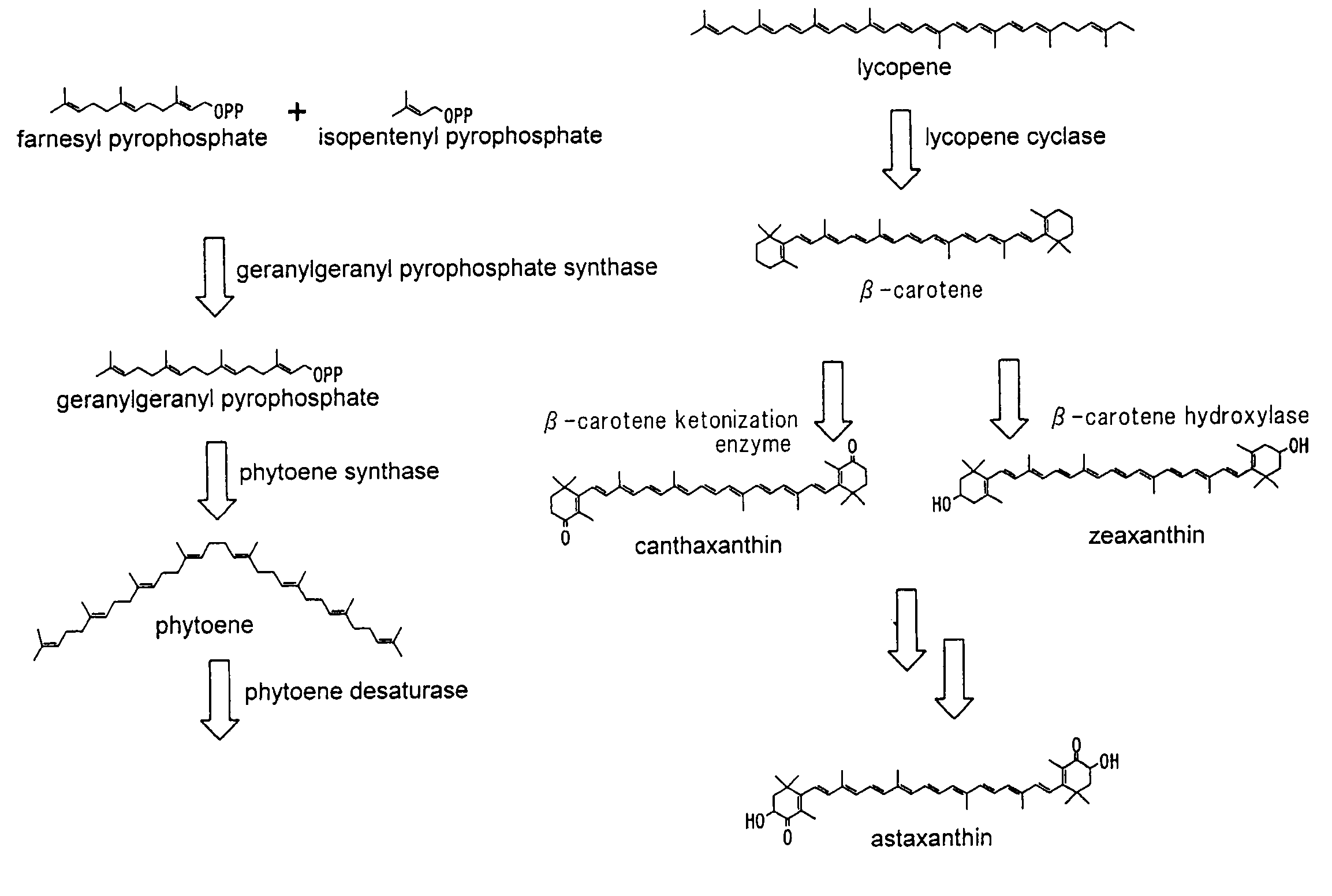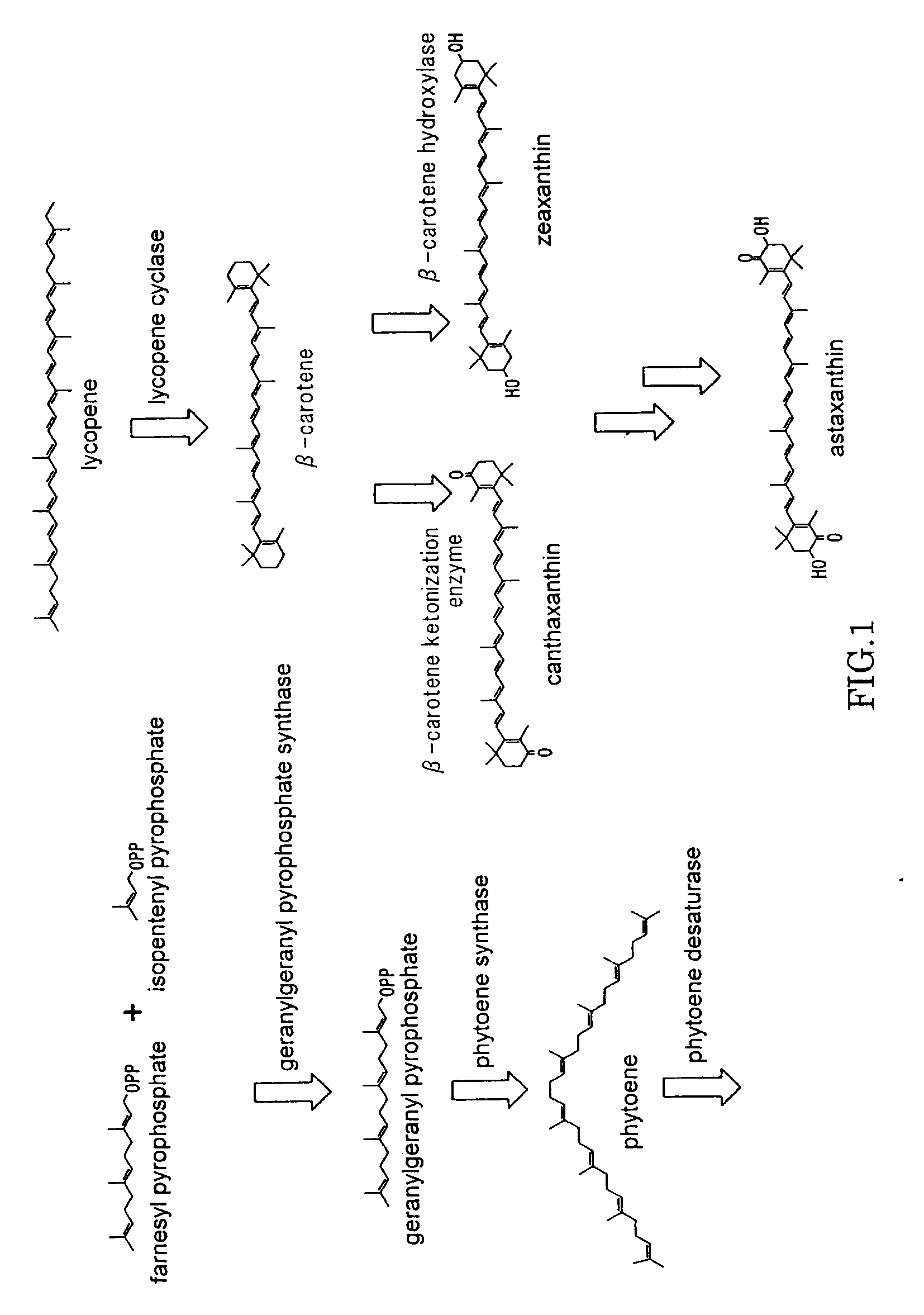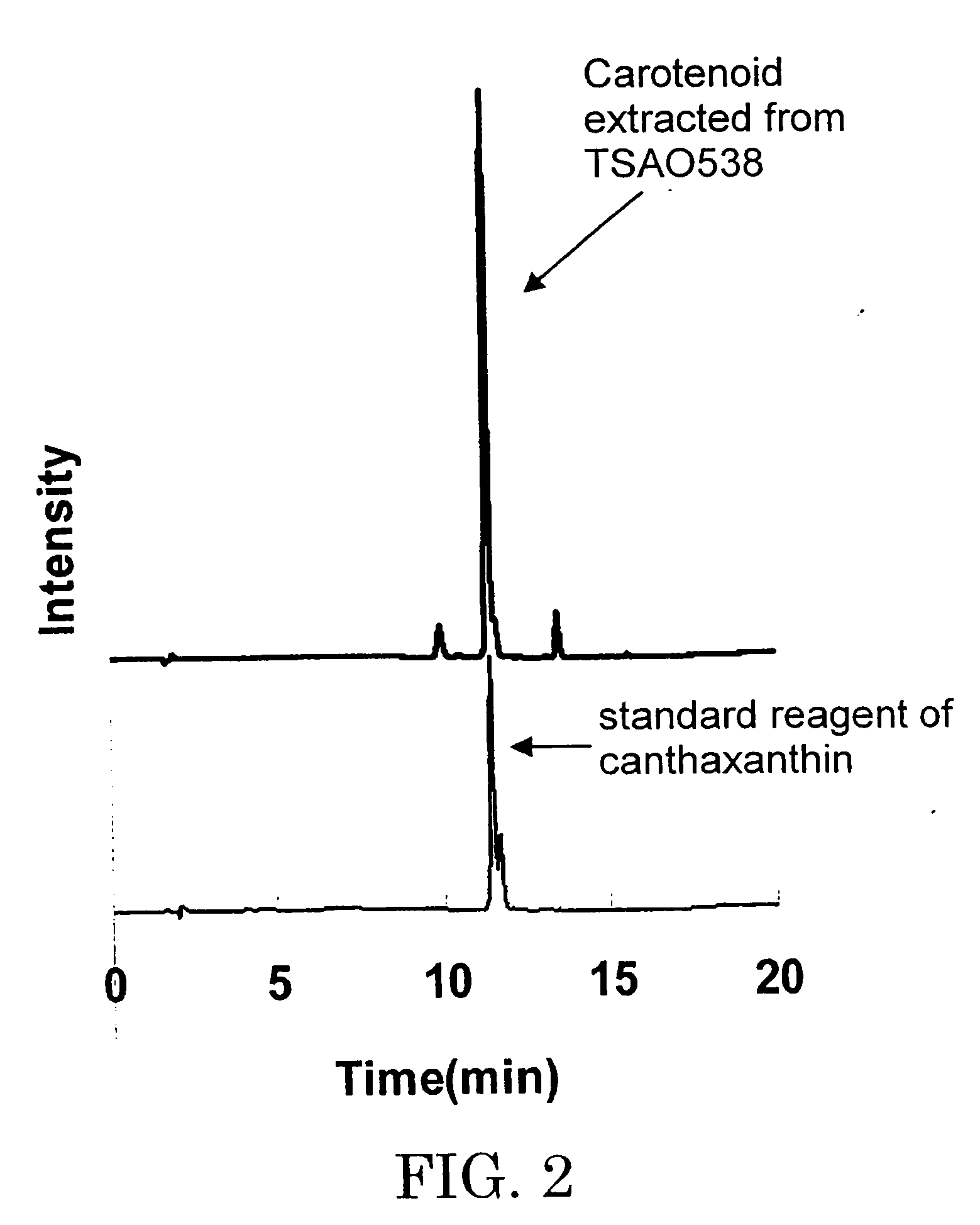Novel microorganism and method for producing carotenoid using the same
a technology of carotenoid and microorganism, which is applied in the field of new microorganisms and a method for producing carotenoid, can solve the problems that extraction and purification of such substances are not easy to achiev
- Summary
- Abstract
- Description
- Claims
- Application Information
AI Technical Summary
Benefits of technology
Problems solved by technology
Method used
Image
Examples
example 1
Mutagenesis into Paracoccus Sp. Strain and Plate Evaluation of Mutant Strain
[0061]Bacterial Paracoccus sp. strain TSTT052 (deposition number: FERM P-20690) was inoculated into 5 mL of a liquid culture medium shown in Table 1 and was cultured in a tube for 1 day at 25° C. under shaking at 150 rpm. Subsequently, 1 mL of this culture solution was transferred to a 1.5-mL Eppendorf tube and was then centrifuged at 15,000 rpm for 10 minutes to collect bacterial cells. These bacterial cells were suspended in 1 mL of a potassium phosphate buffer solution (buffer solution A) at a concentration of 0.1 M and at a pH of 7.0, were then added with 10 μL of an aqueous solution of N-methyl-N′-nitro-N-nitorosoguanidine (hereinafter referred to as “NTG”) at a concentration of 3 mg / mL, and were subsequently held for 30 to 60 minutes. After centrifugal separation was performed to remove a supernatant, the bacterial cells were again suspended in the buffer solution A twice to remove NTG. Furthermore, th...
example 2
Culturing of Mutant Strain of Bacterium Paracoccus Sp. Strain
[0062]The bacterial strain obtained in Example 1 was randomly selected, was then inoculated into 5 mL of the culture solution shown in Table 1, and subsequently, was cultured for 1 day at 25° C. Then, 60 mL of a culture medium having the composition shown in Table 1 was sterilized in a 100-mL Erlenmeyer flask equipped with a baffle and was inoculated with 2 mL of the culture solution which was cultured beforehand as described above. After culture was performed for 7 days at 25° C. under shaking (100 rpm), the culture solution was appropriately sampled, and the turbidity (OD 660 nm) and the carotenoid amount were determined. The carotenoid amount was determined by the following process. First, 1 mL of the culture solution was received in a 1.5-mL Eppendorf tube, followed by centrifugal separation at 15,000 rpm for 5 minutes, so that pellets of bacterial cells were obtained. The bacterial cells were then suspended in 20 μL o...
PUM
 Login to View More
Login to View More Abstract
Description
Claims
Application Information
 Login to View More
Login to View More - R&D
- Intellectual Property
- Life Sciences
- Materials
- Tech Scout
- Unparalleled Data Quality
- Higher Quality Content
- 60% Fewer Hallucinations
Browse by: Latest US Patents, China's latest patents, Technical Efficacy Thesaurus, Application Domain, Technology Topic, Popular Technical Reports.
© 2025 PatSnap. All rights reserved.Legal|Privacy policy|Modern Slavery Act Transparency Statement|Sitemap|About US| Contact US: help@patsnap.com



